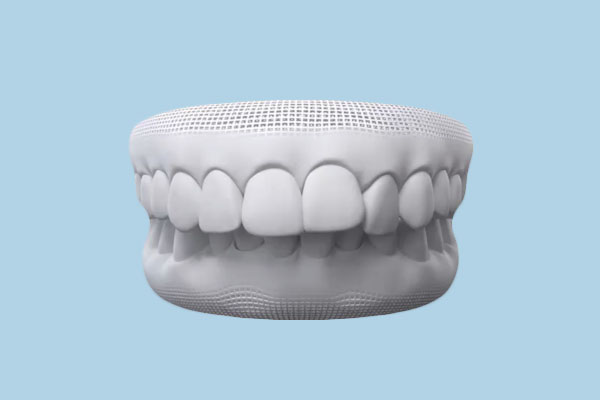Contents

Retrognathia: Causes, Consequences, and Solutions for Protruding Teeth
Retrognathia, also known as "protruding teeth" or a "receding chin," is a skeletal disorder that affects the alignment of the jaws. This malposition can have significant aesthetic and functional repercussions, but fortunately, there are effective solutions to address it. In this article, we will explore in detail the causes, consequences, and treatments for retrognathia.
What is Retrognathia?
Retrognathia is a type of malocclusion characterized by a discrepancy between the upper and lower jaws. Unlike prognathism, where the mandible is overdeveloped, retrognathia manifests as:
- A mandible (lower jaw) that is set back relative to the upper jaw
- Protruding upper teeth, often called "buck teeth"
- A receding or weak chin
This discrepancy can affect facial aesthetics and lead to various functional problems.
What are the main causes of Retrognathia?
Several factors can cause a discrepancy between the jaws and protruding teeth:
- Oral habits during childhood, such as prolonged thumb-sucking or pacifier use.
- Facial trauma and jaw fractures.
- Improper tongue positioning that pushes the teeth forward.
- Heredity, where other family members have the same issue.
Early diagnosis and prompt treatment are crucial for achieving the best results and preventing the worsening of dental and maxillary problems. In the case of poor oral habits, it is essential to correct them before starting orthodontic treatment.
How to correct Retrognathia and protruding teeth?
The treatment for retrognathia depends on the patient's age and the severity of the discrepancy. The main therapeutic options are:
Orthodontics
Orthodontics is particularly effective in children for guiding jaw growth. The results are optimal when treatment is initiated before the end of bone growth. Early orthodontic treatment can be proposed from the age of 5, or even earlier if the child can manage the constraints of wearing an appliance, especially in terms of hygiene.
Orthodontic appliances used to correct retrognathia include:
- Functional appliances (like the Twin Block or Herbst appliance), worn mainly at night.
- Braces with elastics.
- Clear aligners like Invisalign.
Orthognathic Surgery
In adults, or when the discrepancy is primarily skeletal, a combined approach of orthodontics and surgery is often preferable to correct protruding teeth. Orthodontics aligns the teeth, while jaw surgery repositions the jaws to restore facial harmony. This surgery is generally performed after the age of 17-18, once jaw growth is complete.
Speech Therapy
Before starting treatment to correct protruding teeth, a speech therapy evaluation is often necessary to assess the need for functional rehabilitation. An orofacial myofunctional therapist identifies behaviors to modify, such as improper tongue positioning or harmful oral habits.
What are the consequences of untreated Retrognathia?
Beyond the aesthetic impact, retrognathia can lead to various functional problems:
- Speech difficulties
- Pain or clicking during chewing or yawning
- Dental and periodontal problems
- Respiratory issues and sleep apnea
- Atypical swallowing with improper tongue positioning
Without adequate treatment, retrognathia can also cause premature tooth wear, an increased risk of cavities, gum recession, and a higher risk of dental trauma in case of a fall.
Conclusion
Retrognathia, characterized by protruding teeth and a receding chin, is a skeletal disorder that can have significant aesthetic and functional repercussions. Depending on the situation, treatment may involve an orthodontic, surgical, or combined approach. Early intervention is essential to avoid complications and optimize treatment outcomes.
FAQ about Retrognathia
How is Retrognathia treated?
Treatment can involve orthodontics, orthognathic surgery, and speech therapy, depending on the severity of the discrepancy and the patient's age.
Is there a solution to advance the jaw without surgery?
Certain orthodontic appliances, like the Herbst appliance, can correct retrognathia without surgery, particularly in younger patients whose bone growth is not yet complete.
Can you align protruding teeth without braces?
Clear aligners are an aesthetic alternative to traditional braces for treating many dental malocclusions, including retrognathia.
What are the causes of Retrognathia?
Retrognathia can be hereditary or caused by bad habits during childhood, such as prolonged thumb-sucking, or by improper tongue positioning.
